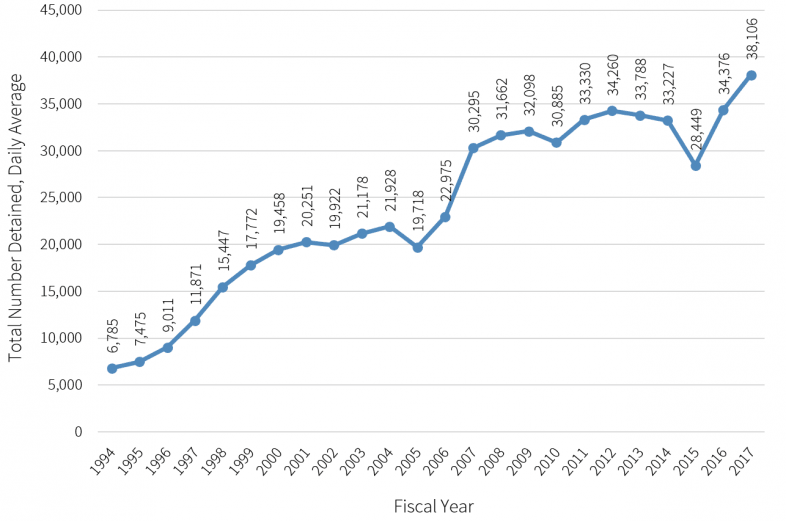
By Emily Ryo, J.D., Ph.D. and Ian Peacock, M.A.
What Do We Know about Immigration Detention In The United States?
Immigration detention refers to the U.S. federal government’s practice of confining individuals accused of immigration law violations. Criminal incarceration, on the other hand, allows state or federal governments to confine individuals charged with, or convicted of, a criminal offense. Immigration detention occurs in a range of facilities and may last the duration of an individual’s immigration proceedings and, in certain situations, even after his or her immigration proceedings are completed.
Immigration detention is civil confinement that implicates core due process issues.
The law considers immigration detention to be strictly civil—that is, “nonpunitive and merely preventative” in nature. Accordingly, the U.S. government does not grant immigrant detainees the same set of legal protections that are afforded to criminal defendants, such as the right to government-appointed counsel, the privilege against self-incrimination, the ban on cruel and unusual punishment, and the right to a speedy trial.
Yet many aspects of immigration detention make detention indistinguishable from criminal incarceration. Immigrant detainees are typically held in jails and jail-like facilities. Detainees must wear government-issued uniforms and wristbands with identifying information at all times. Their daily lives are regimented, and they face constant surveillance. Moreover, the detainees can be subjected to discipline and segregation, and their contacts with the outside world are limited.
There are growing reports of civil and human rights violations in detention, including substandard medical care, sexual and physical abuse, and exploitative labor practices. ICE acknowledged at least 185 deaths in detention between October 2003 and July 2018. According to a report written by the Office of the Inspector General at the Department of Homeland Security (DHS) in December of 2017: “Overall, the problems we identified undermine the protection of detainees’ rights, their humane treatment, and the provision of a safe and healthy environment.” These problems ranged from the use of strip searches to the misuse of segregation.
The average daily detained population increased more than fivefold between 1994 and 2017.
The modern era of immigration detention in the United States began with the enactment of two laws in 1996: The Antiterrorism and Effective Death Penalty Act and the Illegal Immigration Reform and Immigrant Responsibility Act. These laws broadened the type of criminal offenses that could trigger removal proceedings. Both sets of laws also expanded the categories of noncitizens who could be detained without the possibility of release pending the completion of their removal proceedings.
